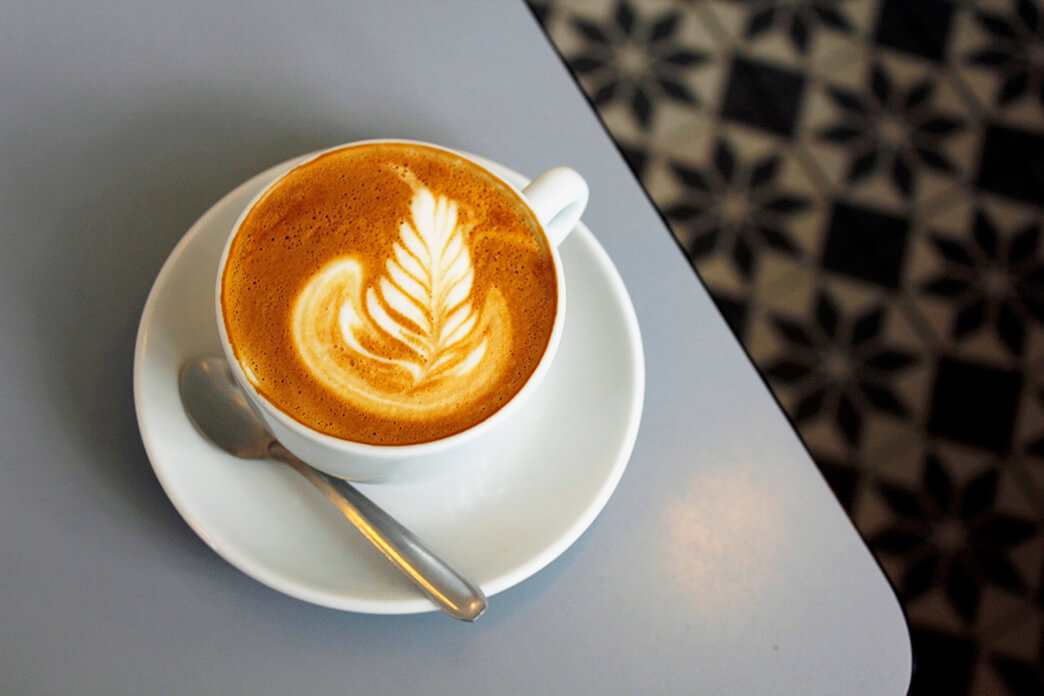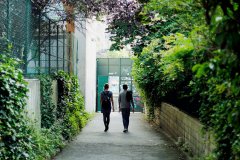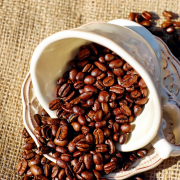Introduction to the treatment method of planting and Development History of single Bean Flavor in Tianzi Manor

Professional barista communication, please pay attention to coffee workshop (Weixin Official Accounts cafe_style )
Nicaragua Nicaragua
Population: 6071000
Nicaragua has a number of smaller growing areas, including Madriz, Managua, Boaca and Carazo, which are not listed below but actually produce some excellent coffee.
JINOTEGA
The name of Chinotecavo, and its capital, comes from the Nahuatl script xinotencatl, but the meaning of the word varies, either from "city old man" to "neighbor of Jinocuabos," but the latter is probably more accurate. The region's economy has long been dependent on coffee, and it remains the main producer in Nicaragua.
Altitude: 1,100- 1,700 m
Harvest: December-March
Breed: Caturra, Bourbon
MATAGALPA
Matagalpa is named after the capital city where the Coffee Museum was founded. Coffee in the region is produced by a mixture of large estates and cooperatives.
Altitude: 1,000- 1,400 m
Harvest: December-February
Breed: Caturra, Bourbon
Nicaragua Godsend, Hope Manor 2010 Nicaragua Cup of Excellence has 91.31 won the President's Award. Not much production, non-large buyers visit...
n regalo de Dios means--(a gift from God)--, translated in Taiwan as Nueva Segovia, located at high altitude in Mozonte, Nigeria. The head of the estate is Luis Alberto Balladares Moncada.
In recent years, only about 30 coffee estates have been selected for the Nigerian CoE competition each year, of which 80% come from Nueva Segovia (New Sacovia), which is planted at an altitude of about 1400- 1700 meters. Tianci Manor Coffee Garden is mostly located on the hillside. Although it is steep, it has rich animal and plant ecology, beautiful mountain scenery, primitive forest and high cold mountain spring. It is very important to maintain the ecology. The altitude is about 1350 meters to 1800 meters. The clouds and clouds are swirling in the morning and evening. The annual rainfall is about 1700 millimeters. The annual average temperature is below 20 ° C. Therefore, the coffee flavor is rich and delicate. The soil is sandy and lime layer.
Pacamara is a rare and precious variety developed in El Salvador. It has a variety of flavors such as full/rich variety/apricot/vanilla/tropical fruit/chocolate/spice sweet. Few coffee varieties can have bright fruit acids and strong sweetness, but like other large beans, the yield is relatively scarce.
Pacamara is a variety derived from Maragogype and Pacas, which are composed of the first four letters of Maragogype and Pacas respectively. The particle size is close to that of elephant beans (about 20 mesh on average). It is the best coffee variety in Central and South America.
Features of Coffee:
Finca Un Regalo de Dios
Owner: Luis Alberto Balladares Moncada
City: Mozonte
Production area: Nueva Segovia
Area: 301 hectares
Altitude: 1700m
Variety: Pacamara. Moonstone
Treatment method: full washing method, natural sun drying
Lemon notes with carambola sweetness and a touch of mango sourness. It has berry sweetness on the palate and apple sweetness on the finish.
Features:
Dry/Wet Aroma--Peach/longan nectar/vanilla/floral/caramel/grape/chocolate/berry/citrus
Sip-Sweet/tropical fruit/citrus/peach/berry/floral on the palate, good cleanliness, nutty/caramel/chocolate, pronounced salivation, lingering nectar sweetness, peach acidity on the finish, rich nasal aroma
“God bless you, Patrick.”Luis, owner of the Nicaragua Providence Estate, is a devout Catholic, as can be seen from his behavior and kindness towards workers during the few days with him. He blessed me because I announced on Facebook that I would donate 50% of the proceeds from my travel sales to a local children's charity called Fundacion de Ninos Un Corazon para Amar.
The story of coffee beans before they enter the bag
This is the first time anyone has published a travelogue on the subject of coffee upstream. My goal is to improve the understanding of downstream operators on the upstream industry chain, and through interview photography to let the public spy on the story of coffee beans before entering the bag. As far as I know, this travel book is the world's first printed photo collection shot purely with Leica monochrom cameras. During this trip to Central America, I only used a 35mm lens with the nickname "Seven Jade". Since the purpose of photography is not aesthetic appreciation, the post-production is also based on the principle of storytelling. Please forgive me photographers.
Three months had passed since my visit to the farm. Coffee shops in the city work the same way: the layout is still the same, the air conditioning is always on, and colleagues quietly participate in purchasing raw beans, baking, brewing, and communicating with customers. The only evidence of the passage of time may be the seasonal menu of special drinks. In June, I believe that the coffee trees in the valley have returned to green from red with fruits; after a while, the branches will be covered with white flowers and fragrance everywhere. Of course, the scene in the eyes of farmers will not be so romantic, but relying on the laws of nature's four seasons to work is something that many city people have never experienced in their poor lives.
In the long industrial chain, coffee has changed from a seed to a tree, from harvest to processing, and then from roasting to extraction, through countless hands of the same industry. This trip made me realize that I am not the only one who is curious about the industrial chain. Farmers also want to know how their coffee will be interpreted and appreciated by consumers on the other side of the world. For example, they know that the highest density beans are the best, that is, they sell well, but they know nothing about the difference between good and bad beans in taste or how to bake them. I used a local sample roaster to demonstrate how sun-cured coffee was roasted in my shop, and after tasting it, they exclaimed,"I didn't know we could grow coffee that way." I promised to mail them a set of hand brewers and funnels so farmers could taste the delicious coffee they grew.
Of course, they weren't the only ones amazed. The author and his team members saw farmers skillfully using geographical location and limited natural resources to bring the potential of fruits into full play. Especially in small family-run farms, where the meat beater is covered with rust, the sink is next to the kitchen sewer, and there is no tap water for cleaning, but bottled water! But a lot of the winners at nationals are small farms. Perhaps passion and concentration are the secret ingredients of quality.
Each farm has a different view of coffee, some hereditary, some refined. They will make moving works with limited facilities to match the weather of the season. And fine coffee most avoid defective beans. We spent the whole morning sifting only a few hundred grams of coffee before we realized that flawless coffee was not something to be taken for granted. It involved a lot of manpower and resources, as well as the dedication and dignity of farmers to their products.
The best coffee shops around the world send regular visits to the farm. In addition to purchasing, it will also explore market trends or discover new varieties. Seeing that many operators have regarded it as a routine of "picking goods", the author wants to open his eyes a little bit: every farm has its story worthy of detail.
Country: Nicaragua
Finca Un Regalo de Dios
Owner: Luis Alberto Balladares Moncada
Place: 3rd place (CoE National Competition 2010)
City: Mozonte
Production area: Nueva Segovia
Estate area: 14.68 hectares
Altitude: 1750 m
Cultivated varieties: Catuai Rojo,Maracaturra
Treatment: washing, scaffolding sun
Batch size: 42 boxes
Total: 2,746.05 (1,245.59 kgs)
Final Score: 91.31
Cup Code #: 293
Orsir Coffee (Taiwan)
Cup Test Report:
Baking method: one burst of beans in the middle, Osher M0 roast (cinnamon roast), baking time 12 minutes,
Dry aromas: oily, manor chocolate, berry fruit, cherry, floral, spicy sweet, very clean and varied aromas
Wet aromas: caramel, dark berry, grape, citrus
Sip: Very clean and delicate, dark berries, raspberries, multiple aromas, spices and ginger flowers, fine chocolates of manor grade, multiple berry chocolates, citrus sweet, Burgundy red wine, grape, cream sugar, black cherry, sweet pineapple, floral and spice sweet, black tea sweet, juice sweet lasting.
Important Notice :
前街咖啡 FrontStreet Coffee has moved to new addredd:
FrontStreet Coffee Address: 315,Donghua East Road,GuangZhou
Tel:020 38364473
- Prev

Introduction of Hope Manor single Bean Flavor description Variety planting Development History production area treatment method
For the exchange of professional baristas, please follow the Coffee Workshop (Wechat cafe_style) Colombia Colombian population: 47073000 Colombia has well-defined growing areas and the impressive variety of coffee they produce. Whether you want round, heavy coffee, refreshing, fruity (or somewhere in between), the most
- Next

Introduction to the treatment method of planting Development History of single Bean Flavor description varieties in Ethiopia
For the exchange of professional baristas, please follow the coffee workshop (Wechat official account cafe_style) Ethopia Ethiopian population: 93877000 Ethiopia's producing area name is the most recognized in the coffee industry and is currently the country with the largest number of coffee names as the name of the producing area. This is the case today, and the future is foreseeable. In addition, Arabica genes of original species and wild species
Related
- Does Rose Summer choose Blue, Green or Red? Detailed explanation of Rose Summer Coffee plots and Classification in Panamanian Jade Manor
- What is the difference between the origin, producing area, processing plant, cooperative and manor of coffee beans?
- How fine does the espresso powder fit? how to grind the espresso?
- Sca coffee roasting degree color card coffee roasting degree 8 roasting color values what do you mean?
- The practice of lattes: how to make lattes at home
- Introduction to Indonesian Fine Coffee beans-- Java Coffee producing area of Indonesian Arabica Coffee
- How much will the flavor of light and medium roasted rose summer be expressed? What baking level is rose summer suitable for?
- Introduction to the characteristics of washing, sun-drying or wet-planing coffee commonly used in Mantenin, Indonesia
- Price characteristics of Arabica Coffee Bean Starbucks introduction to Manning Coffee Bean Taste producing area Variety Manor
- What is the authentic Yega flavor? What are the flavor characteristics of the really excellent Yejasuffi coffee beans?

